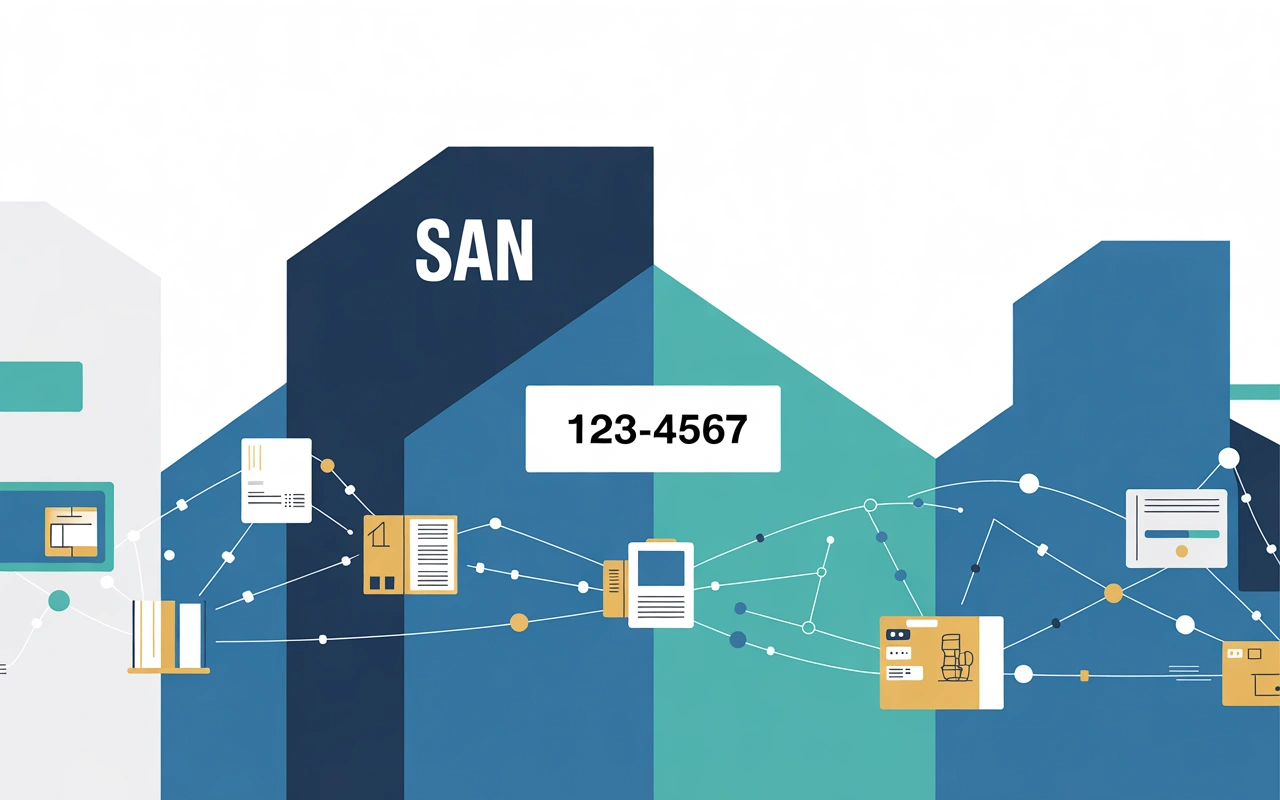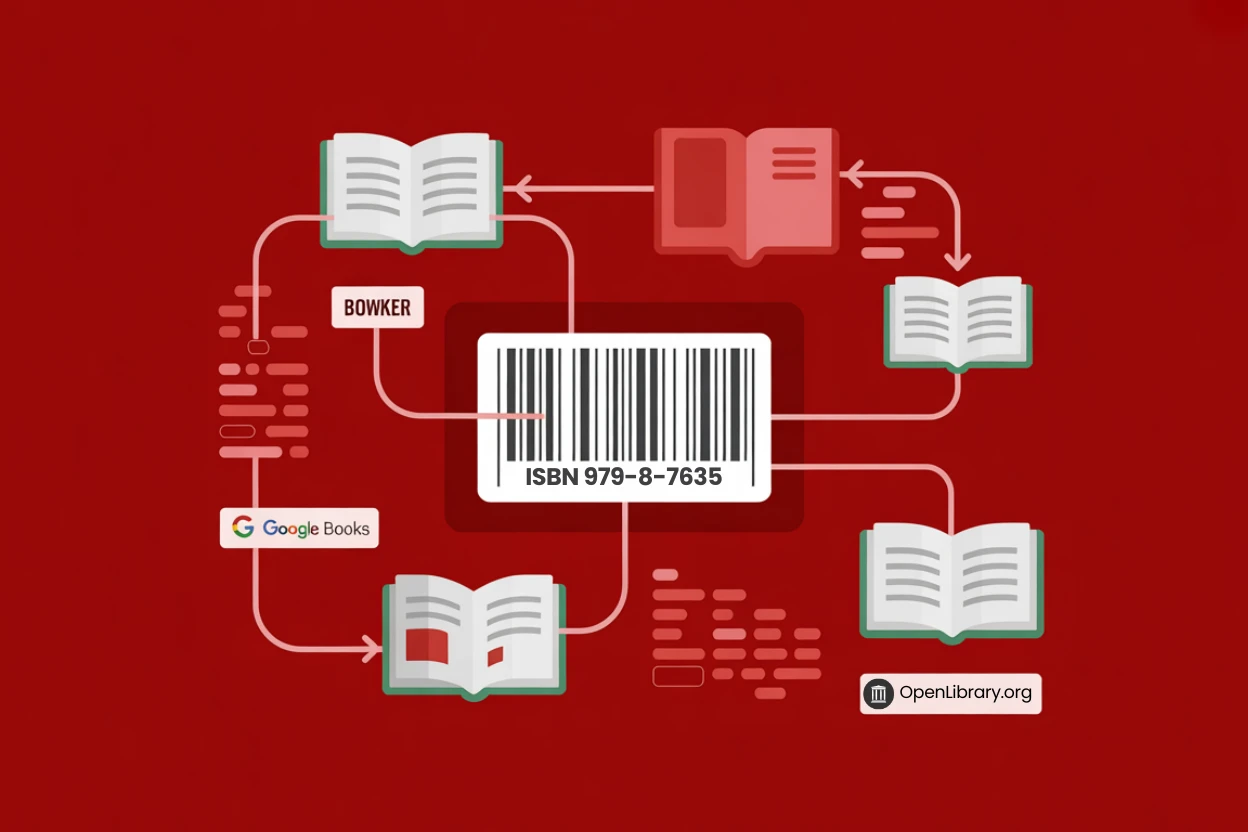
What is SAN in Publishing? A Complete Guide to Standard Address Numbers
SAN (Standard Address Number) is a unique seven-digit identifier for organization addresses in the publishing industry. Learn how it works, costs, alternatives, and whether your business needs one.
SAN in marketing is considered Subscription Account Number
SAN in SSL certificate (internet encryption) is considered Subject Alternative Name
SAN in Publishing is considered Standard Address Number
There are more definitions, but here we are talking about SAN in Publishing.
What is SAN in Publishing?
SAN stands for Standard Address Number. It is a unique seven-digit identifier assigned to a specific address of an organization involved in the publishing industry. SAN is used by book publishers, bookstores, distributors, wholesalers, libraries, or other entities like printers and paper manufacturers.
SAN helps organizations working in the publishing industry by streamlining transactions to ensure accurate identification of addresses for activities like ordering, billing, shipping, and returns. Instead of entering the full address of an organization, a 7-digit number is used. This is just like ISBN for books, but SAN is for organization addresses in publishing.
FAQ
How does a SAN work?
A SAN number links a specific address to transactions, preventing errors when organizations have multiple locations. For example, a bookstore chain uses its SAN to direct shipments to its distribution center, not a retail store. It’s used in EDI systems to automate and standardize processes, ensuring the right address is referenced for invoicing, shipping, or returns. The SAN consists of six digits plus a modulus-eleven check digit (e.g., 123-4567, with a hyphen for readability).
Where does the address data come from?
The address data is provided by the organization at the time of obtaining the SAN. Only one address can be used with one SAN. The SAN is then registered in a database maintained by the issuing agency, such as Bowker or Nielsen BookData in the UK.
Is there a directory or SAN lookup?
There is no SAN directory or database publicly available where users can search an organization name to find their SAN. There is a SAN lookup database where users can find organization addresses by using the SAN.
How do I obtain a SAN?
Bowker is the official SAN agency in North America. Visit their websit and complete the SAN application form, providing details like the organization’s name, contact information, and the specific address to be associated with the SAN. Pay the required fee. Once approved, Bowker assigns a unique SAN. Processing time can take up to 2 days.
For other countries: SANs are part of the global GLN system managed by GS1. Contact your local GS1 organization or a regional ISBN agency (e.g., Nielsen for the UK) to apply.
How much does a SAN cost?
In the United States: Bowker charges approximately $150 for a single SAN. Additional cost is involved if you need to update the address tied to your SAN. You need to obtain a new SAN if the original location closes.
For other countries: Costs vary by region. Some agencies, like MVB, may offer SANs for free as part of publishing packages.
Who needs a SAN, and do I need one?
You may need a SAN if you are an organization working in the book publishing industry such as:
- Publishers
- Bookstores
- Distributors/wholesalers
- Libraries
You can benefit from a SAN if you have multiple locations and are using EDI systems (e.g., Pubnet) for book ordering.
You don’t need a SAN if:
- You are a self-publisher
- You are using print-on-demand services to publish your book
Print-on-demand services such as IngramSpark and Amazon KDP don’t require a SAN.
How to use the SAN, and where is it printed?
Provide the SAN to publishers, distributors, or bookstores you work with, especially for EDI systems like Pubnet. For example, include it in order forms, invoices, or return authorizations to specify the correct address.
The SAN appears on invoices, purchase orders, shipping labels, or return authorizations to identify the specific address involved. For example, a publisher might include their SAN on an invoice to indicate the billing address. In electronic systems, the SAN is embedded in data fields to specify addresses for automated processing.
SANs are not typically printed on books or physical products like ISBNs. Instead, they’re used in backend processes and documentation.
Final Thoughts
I couldn’t find the SAN of any organization publicly available, and it seems like only a few book ordering systems use SANs. Organizations such as Pubnet, XNET, and PubEasy use SANs in their book ordering systems. I am not sure what kind of organization XNET is, but Pubnet and PubEasy are owned by the same organization.
There is not much information on how SANs are generated, unlike ISBNs that use mathematical calculations and are not random.
To me, SAN seems like another gimmick invented by ISBN agencies and GS1, trying to fix something that doesn’t need fixing. ISBN agencies in countries such as the US sell unnecessary services like ISBN barcode generation, which can be generated through ISBNBarcode.org for free.
QR codes can do a better job than what SAN is trying to do. A QR code can store any kind of text and has long data storage capacity with no requirement for a centralized database. If you are a publisher that wants to avoid mistyping organizational addresses, then just use QR codes.
Plus Codes is a consumer-friendly and widely used project similar to SAN. Plus Codes is developed by Google and is used in Google Maps. It doesn’t use addresses; instead, it replaces the use of addresses to find a location anywhere in the world.

Araix Rand
Book Publicist
Araix Rand is the Founder of Bookllo Publishing, an author, blogger, and photographer. Since 2019, he has been helping authors in self-publishing and marketing their books. Additionally, he writes for various business and marketing blogs.
More posts by Araix Rand

